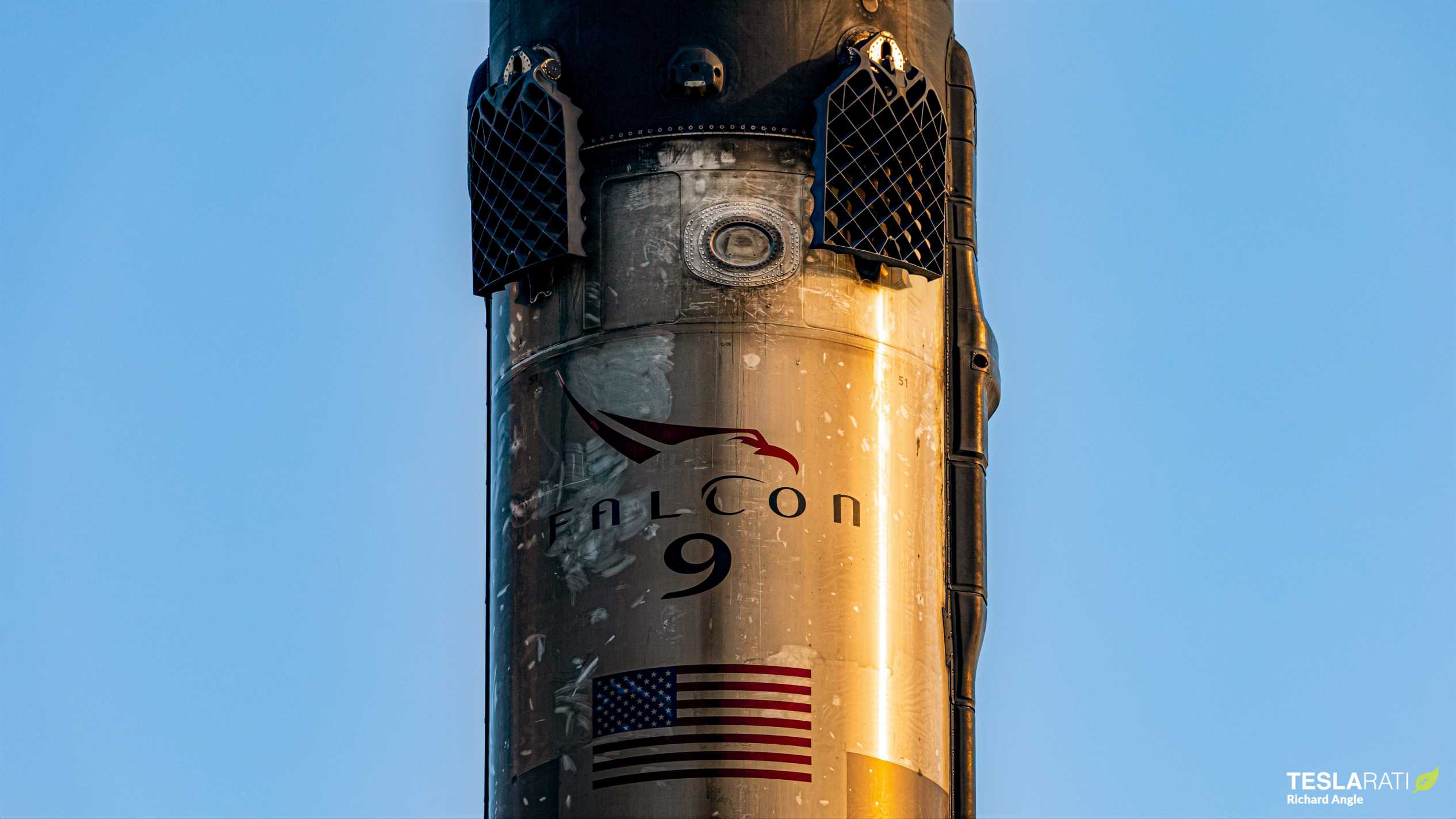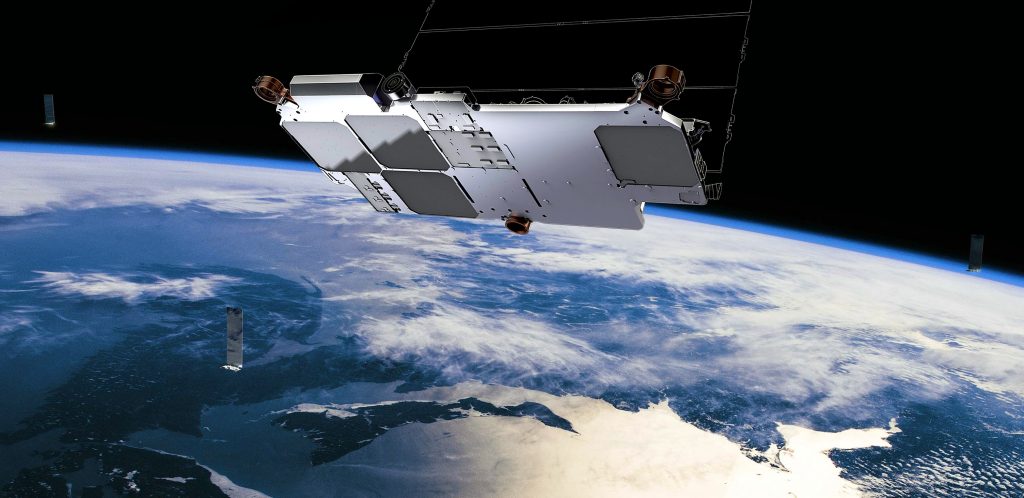

News
SpaceX’s first Starlink launch of 2021 slips to Tuesday [update]
Update: SpaceX says it has delayed Falcon 9’s Starlink-16 launch to no earlier than (NET) 8:23 am (13:23 UTC), Tuesday, January 19th to allow time for weather to improve at the rocket’s Atlantic Ocean recovery zones.
If the schedule holds, Falcon 9 booster B1051 is now on track to attempt its eighth launch and landing 37 days after flight number seven – still potentially breaking the current world record for rocket turnaround by two weeks.
A SpaceX Falcon 9 rocket and local weather conditions appears to be on track for the company’s first Starlink launch of 2021 and 17th Starlink mission overall.
Set to be SpaceX’s 16th launch of operational Starlink v1.0 satellites, the mission – known as Starlink-16 (V1 L16) – is scheduled to lift off no earlier than (NET) 8:45 am EST (13:45 UTC) on Monday, January 18th.
Launching out of SpaceX’s Kennedy Space Center (KSC) LC-39A facilities, Starlink-16 is expected to carry a default batch of 60 low Earth orbit (LEO) internet satellites. Delivered to a relatively low (i.e. fast-decaying) transfer orbit, the 60 satellites will gradually spread out after deployment, opening their solar arrays and beginning a one or several-day period of health checks.

Once declared healthy by SpaceX ground controllers, each flat, rectangular satellite will power up a krypton-fueled Hall-effect thruster and begin the several-week process of raising and circularizing their orbit. In reality, it can take several months for each Starlink batch to separate into smaller groups and reach their respective planes – referring to a sort of linear band of satellite coverage wrapping around Earth’s circumference. For the portions of the Starlink constellation SpaceX is currently focused on building out, each of those planes requires 22 satellites – two of which are believed to be spares.
As previously discussed on Teslarati, the Falcon 9 booster SpaceX has assigned to Starlink-16 is scheduled to fly just 36 days after its last mission, smashing the previous world record for reusable rocket turnaround by ~30%. Starlink-16 will also be Falcon 9 B1051’s eight launch, marking another first for the Falcon rocket family.
According to SpaceX, both of Starlink-16’s payload fairing (the conical carbon fiber composite structure that protects satellites from the elements and atmospheric stress) halves will be flight proven – one on its second flight and the other flying for a third time. Waiting until the last second to avoid high seas in the recovery region, twin fairing recovery ships GO Ms Tree and GO Ms Chief departed a North Carolina port en route to Starlink-16’s fairing catch zone on January 17th. It remains to be seen if Starlink-16 will mark a return to simultaneous catch attempts, which haven’t been seen in several months.

News
Tesla adds new surprising fee to Robotaxi program
“Additional cleaning was required for the vehicle after your trip. A fee has been added to your final cost to cover this service. Please contact us if you have any questions.”

Tesla has added a new and somewhat surprising fee to the Robotaxi program. It’s only surprising because it was never there before.
Tesla shocked everyone when it launched its Robotaxi platform and offered riders the opportunity to tip, only to tell them they do not accept tips. It was one of the company’s attempts at being humorous as it rolled out its driverless platform to people in Austin.
As it has expanded to new cities and been opened to more people, as it was yesterday to iOS users, Tesla has had to tweak some of the minor details of the Robotaxi and ride-hailing platforms it operates.
First Look at Tesla’s Robotaxi App: features, design, and more
With more riders, more vehicles, and more operational jurisdictions, the company has to adjust as things become busier.
Now, it is adjusting the platform by adding “Cleaning Fees” to the Robotaxi platform, but it seems it is only charged if the vehicle requires some additional attention after your ride.
The app will communicate with the rider with the following message (via Not a Tesla App):
“Additional cleaning was required for the vehicle after your trip. A fee has been added to your final cost to cover this service. Please contact us if you have any questions.”
The cost of the cleaning will likely depend on how severe the mess is. If you spill a soda, it will likely cost less than if you lose your lunch in the back of the car because you had a few too many drinks.
This is an expected change, and it seems to be one that is needed, especially considering Tesla is operating a small-scale ride-hailing service at the current time. As it expands to more states and cities and eventually is available everywhere, there will be more situations that will arise.
The messes in vehicles are not a new situation, especially in a rideshare setting. It will be interesting to see if Tesla will enable other fees, like ones for riders who request a ride and do not show up for it.
News
Tesla Model Y sold out in China for 2025
Customers who wish to get their cars by the end of the year would likely need to get an inventory unit.

It appears that the Model Y has been sold out for 2025 in China. This seems to be true for the four variants of the vehicle that are currently offered in the country.
Tesla China’s order page update
A look at Tesla China’s order page for the Model Y shows a message informing customers that those who wish to guarantee delivery by the end of the year should purchase an inventory unit. This was despite the Model Y RWD and Model Y L showing an estimated delivery timeline of 4-8 weeks, and the Model Y Long Range RWD and Model Y Long Range AWD showing 4-13 weeks.
As per industry watchers, these updates on the Model Y’s order page suggest that Tesla China’s sales capacity for the remainder of 2025 has been sold out. The fact that estimated delivery timeframes for the Model Y Long Range RWD and AWD extend up to 13 weeks also bodes well for demand for the vehicle, especially given strong rivals like the Xiaomi YU7, which undercuts the Model Y in price.
Tesla China’s upcoming big updates
What is quite interesting is that Tesla China is still competing in the country with one hand partly tied behind its back. So far, Tesla has only been able to secure partial approval for its flagship self-driving software, FSD, in China. This has resulted in V14 not being rolled out to the country yet. Despite this, Tesla China’s “Autopilot automatic assisted driving on urban roads,” as the system is called locally, has earned positive reviews from users.
As per Elon Musk during the 2025 Annual Shareholder Meeting, however, Tesla is expecting to secure full approval for FSD in China in early 2026. “We have partial approval in China, and we hopefully will have full approval in China around February or March or so. That’s what they’ve told us,” Musk said.
News
Tesla Full Self-Driving appears to be heading to Europe soon
For years, Musk has said the process for gaining approval in Europe would take significantly more time than it does in the United States. Back in 2019, he predicted it would take six to twelve months to gain approval for Europe, but it has taken much longer.

Tesla Full Self-Driving appears to be heading to Europe soon, especially as the company has continued to expand its testing phases across the continent.
It appears that the effort is getting even bigger, as the company recently posted a job for a Vehicle Operator in Prague, Czech Republic.
This would be the third country the company is seeking a Vehicle Operator in for the European market, joining Germany and Hungary, which already have job postings in Berlin, Prüm, and Budapest, respectively.
🚨Breaking: Tesla is hiring vehicle operators in Prague. pic.twitter.com/CbiJdQLCLj
— Tesla Yoda (@teslayoda) November 19, 2025
This position specifically targets the Engineering and Information Technology departments at Tesla, and not the Robotics and Artificial Intelligence job category that relates to Robotaxi job postings.
Although there has been a posting for Robotaxi Operators in the Eastern Hemisphere, more specifically, Israel, this specific posting has to do with data collection, likely to bolster the company’s position in Europe with FSD.
The job description says:
“We are seeking a highly motivated employee to strengthen our team responsible for vehicle data collection. The Driver/Vehicle Operator position is tasked with capturing high-quality data that contributes to improving our vehicles’ performance. This role requires self-initiative, flexibility, attention to detail, and the ability to work in a dynamic environment.”
It also notes the job is for a fixed term of one year.
The position requires operation of a vehicle for data collection within a defined area, and requires the Vehicle Operator to provide feedback to improve data collection processes, analyze and report collected data, and create daily driving reports.
The posting also solidifies the company’s intention to bring its Full Self-Driving platform to Europe in the coming months, something it has worked tirelessly to achieve as it spars with local regulators.
For years, Musk has said the process for gaining approval in Europe would take significantly more time than it does in the United States. Back in 2019, he predicted it would take six to twelve months to gain approval for Europe, but it has taken much longer.
This year, Musk went on to say that the process of getting FSD to move forward has been “very frustrating,” and said it “hurts the safety of the people of Europe.”
Elon Musk clarifies the holdup with Tesla Full Self-Driving launch in Europe
The latest update Musk gave us was in July, when he said that Tesla was awaiting regulatory approval.








